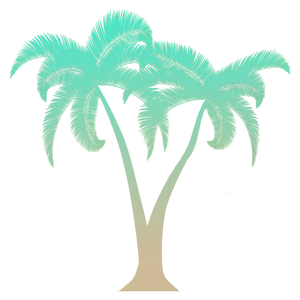Marianne is just under 2 kilometres long and 700 metres wide and is located about 7 km east of La Digue and 3.8 km from Felicite Island. Marianne Island is the twelfth largest (94.7 HA) granitic island in the Seychelles.
The highest peak of the island is the Morne Estel with 130 meters. A second lower peak (about 85 m) appears in the south. The largest part of the island is slightly sloping land below 50 m.
The island consists of porphyric granite, which is slightly different from the other islands of the Praslin / La Digue group. To the northwest, the island is crossed by a dike of densely structured metadolerite rock. On the northern slopes of the island brown earthy rocks appear, which are formed by the deposition of guano on granite soils. On the west side of the island there is a small "plateau" with a fringing reef. The plateau consists of newer calcareous sediments and swamp deposits. The gentle slopes of the island have allowed red soil to accumulate everywhere, with the exception of some coastal areas where little or no soil is present.
The fresh water on the island is limited, especially during the dry season. On the site of the former main settlement (La Cour) there are two shallow wells. A large part of the plateau is covered with swamp vegetation (mainly sedge and ludia).
The island was a former coconut plantation, and on the west side of the island there is a long Beach. The southern tip of Marianne is known as a world class dive site. Sharks can often be seen around the island.
Marianne Island is currently uninhabited, but it is privately owned by the SeyBrew Brewery and is often visited by excursion boats, mainly because of its world-famous dive sites.
During the 19th and 20th centuries, agriculture and copra production was practised on Marianne. There was a former settlement called La Cour. In 1940 the island had 60 inhabitants.
There are several species of geckos on Marianne, including the La Digue Day gecko (Phelsuma sundbergi ladiguensis) and Phelsuma astriata semicarinata. It is said that the rare Seychelles Paradise Flycatcher (Terpsiphone corvina) is occasionally sighted on the island.
It was also once the home of the extinct Seychelles Marianne's White-eye.
Author: Karl Schnürch
In 2007 I started the website Seychelles.com to write everything I experienced from my head. Since then I have been constantly optimizing and expanding Seychelles.com to eventually present a complete picture of Seychelles on this site.

 seychellen.com
seychellen.com Seychellen.com
Seychellen.com